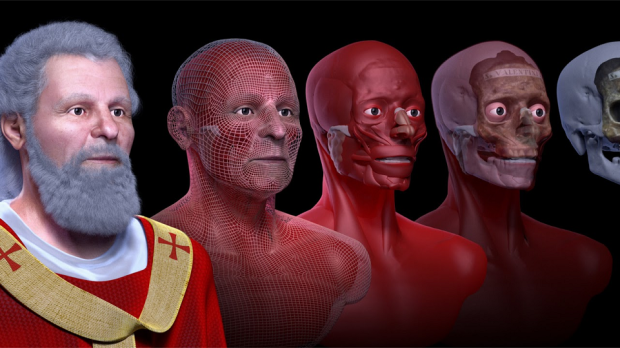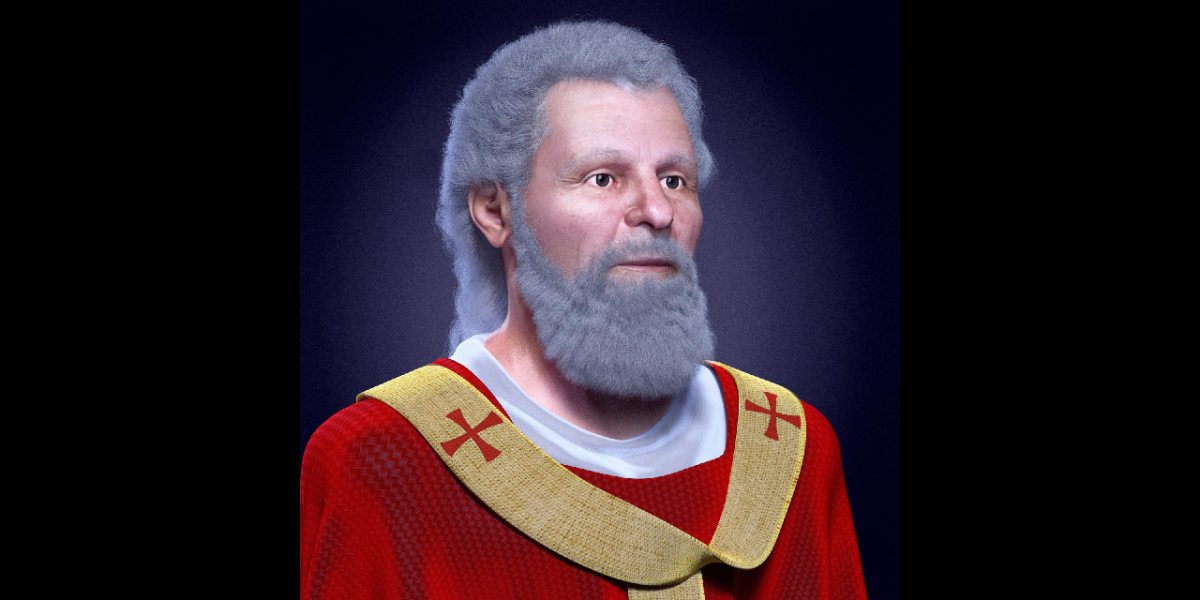Cicero Moraes and the team of researchers who brought you the reconstructed face of St. Anthony of Padua are back with the patron saint of love and happy marriages. ATOR (Arc-Team Open Research) uses state-of-the-art technology to create a digital image of saintly remains, and from there they can render the most accurate possible depiction of what the saints may have looked like. Previous subjects have included Mary Magdelene, Sidoine of Aix, Rose of Lima, Martin de Porres, Jhon Macías, and Paulina Visintainer.
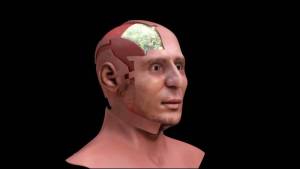
Read more:
The most accurate reconstruction of St. Anthony of Padua’s face
The process began with a photo shoot of St. Valentine’s remains at the Basilica of Santa Maria, in Rome. As Dr. José Luís Lira was unable to physically interact with the relic, he instead took the measurements of the reliquary. From this he was able to determine the proper dimensions of St. Valentine’s skull.
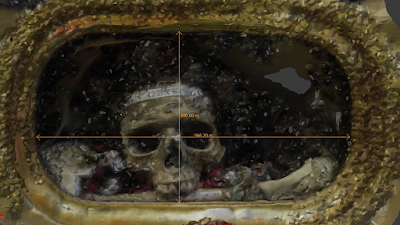
The 40-minute photo shoot yielded about 250 pictures, of which 35 were chosen for digitization of the skull and the reliquary for continued reference. Then a scan was taken of both the skull and the reliquary, to be put through professional forensic programs, which gave them a clear 3D image of the relic.
Unfortunately, due to the limited angles of the photos, there were portions of the skull missing from the 3D image which needed to be replaced using their preexisting digital collection. The piece used to fill in the skull was chosen based on compatibility determined by hundreds of previous examples from their collection, as well as the photos taken of the relic.
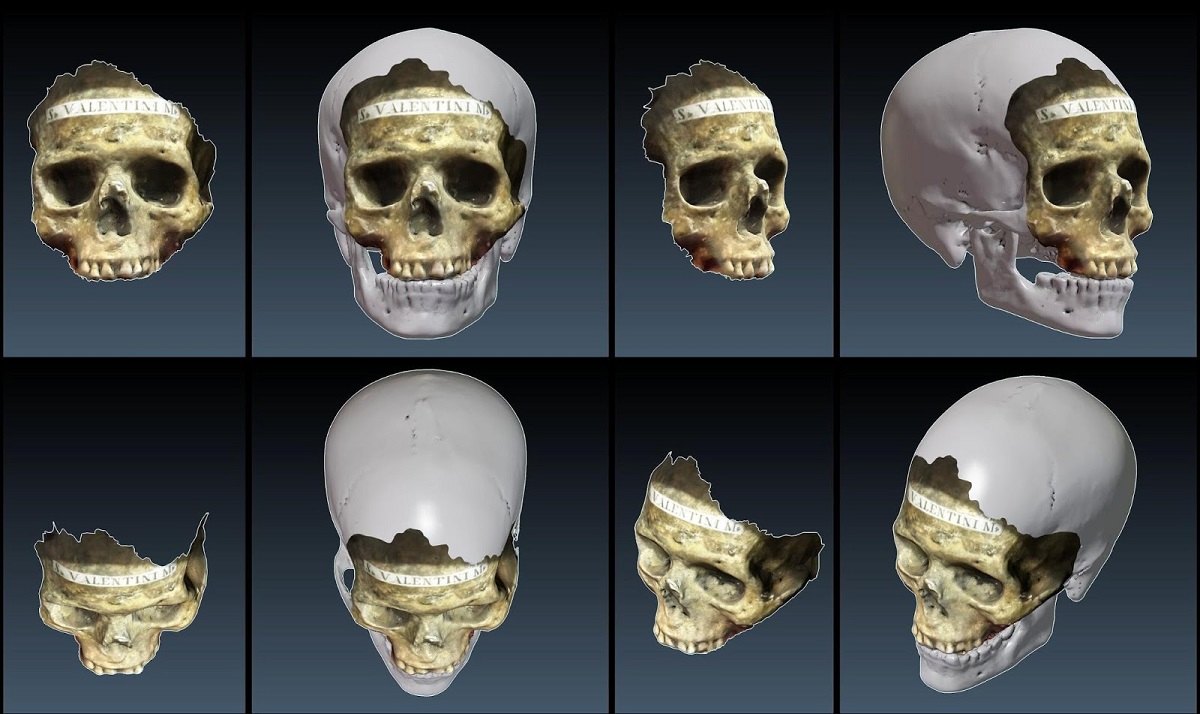
Once they had a solid image of the full skull, they digitally added muscle tissue and skin, and refined the facial features. It should be noted that the contours of the facial tissue correspond with the skull. The team utilized data taken from hundreds of individuals who were male, of European ancestry and over 55 years old as reference.
The process is far more complex than would be pertinent to explain here, but interested parties can find more information in the free ebook Digital Facial 3D Reconstruction, by Moraes.
In the final rendering, St. Valentine was dressed in a tunic, an official liturgical vestment which he most likely wore, as he was an early Christian priest. Moraes explained the color red was chosen because he was a holy martyr:
“… it was decided to use the red color for a kind of chasuble, a solemn vestment proper to the priest (deacon can not use it), which has no seam on the sides and is used in Sunday Masses and holy days.”
